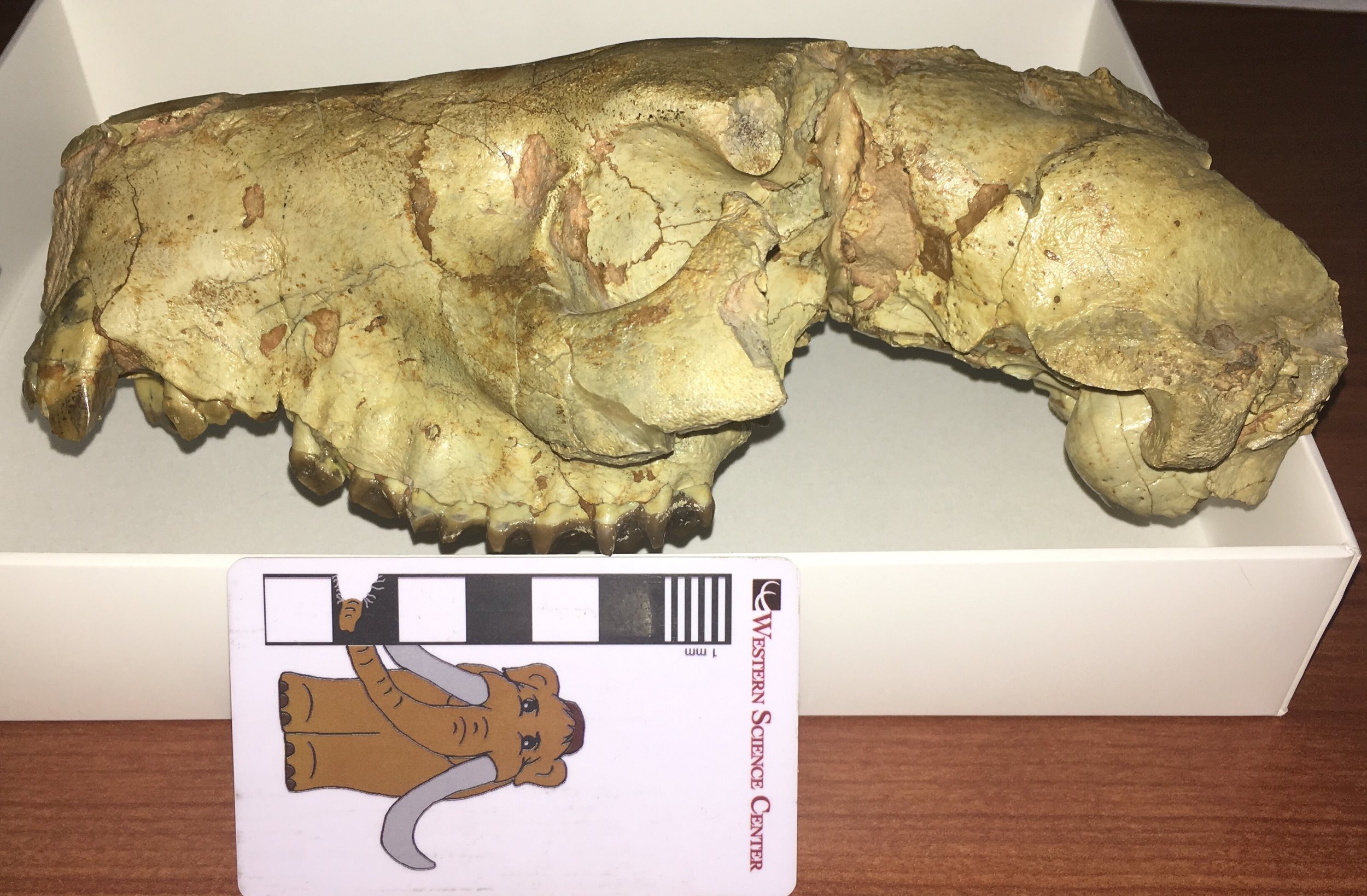 We're in the process of taking in a number of specimens collected by the late Harley Garbani, which are being donated to the museum by his wife Mary. The first item to come to us was a nicely preserved and prepared skull of an oreodont, the first in the WSC collection.Oreodonts are an extinct group of artiodactyls, generally thought to be distantly related to camels. They were very diverse and widespread in North America during the Oligocene and early Miocene, although they are most common in Oligocene deposits in the high plains and northwest, where thousands of specimens have been recovered.The skull collected by Harley came from the White River Group of South Dakota. It's missing much of the posteroventral area and the zygomatic arches, and some of the teeth are damaged, but otherwise it's in pretty good shape. At the top is a left lateral view, with anterior to the left. Below is the right side:
We're in the process of taking in a number of specimens collected by the late Harley Garbani, which are being donated to the museum by his wife Mary. The first item to come to us was a nicely preserved and prepared skull of an oreodont, the first in the WSC collection.Oreodonts are an extinct group of artiodactyls, generally thought to be distantly related to camels. They were very diverse and widespread in North America during the Oligocene and early Miocene, although they are most common in Oligocene deposits in the high plains and northwest, where thousands of specimens have been recovered.The skull collected by Harley came from the White River Group of South Dakota. It's missing much of the posteroventral area and the zygomatic arches, and some of the teeth are damaged, but otherwise it's in pretty good shape. At the top is a left lateral view, with anterior to the left. Below is the right side: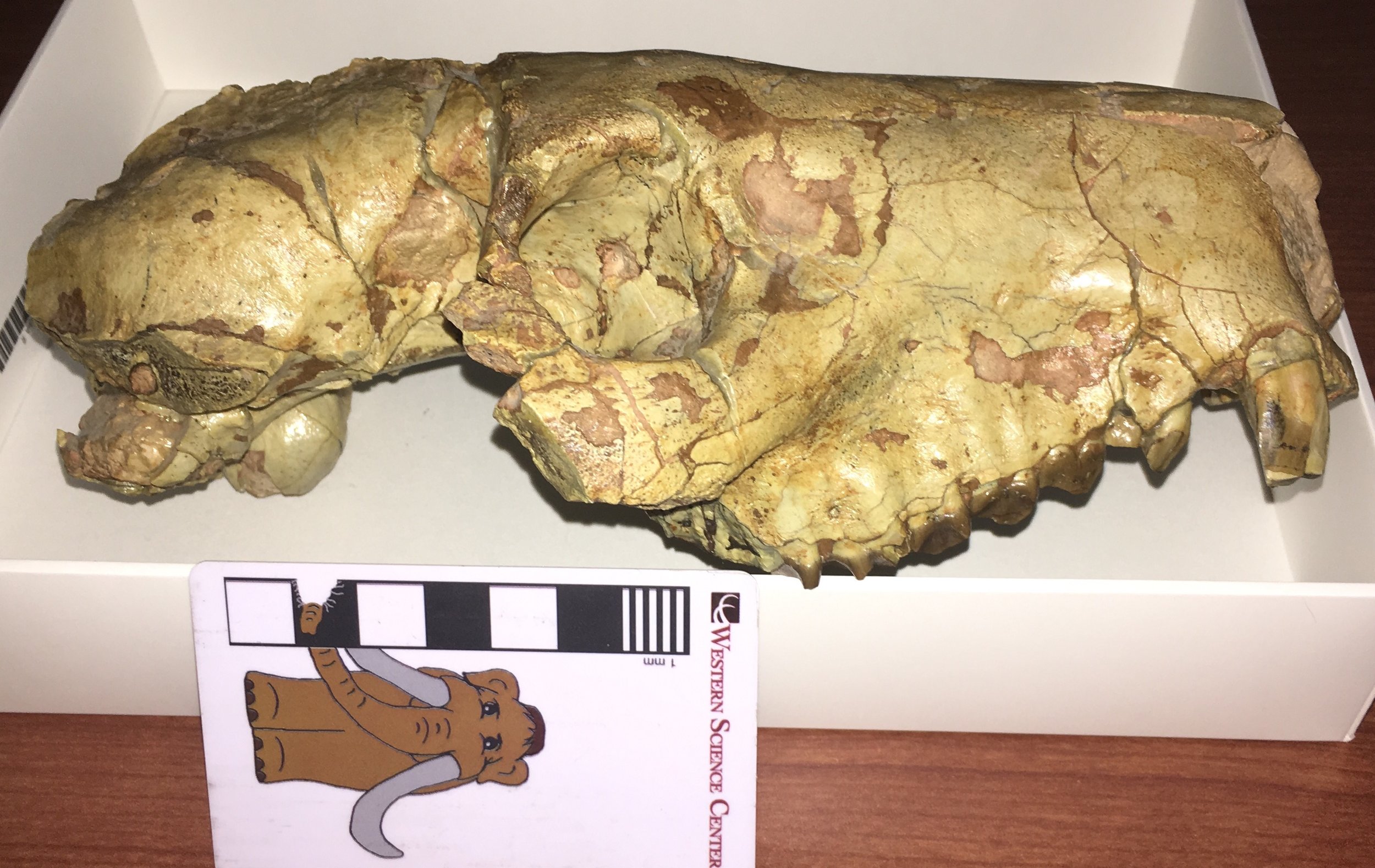 Dorsal view:
Dorsal view: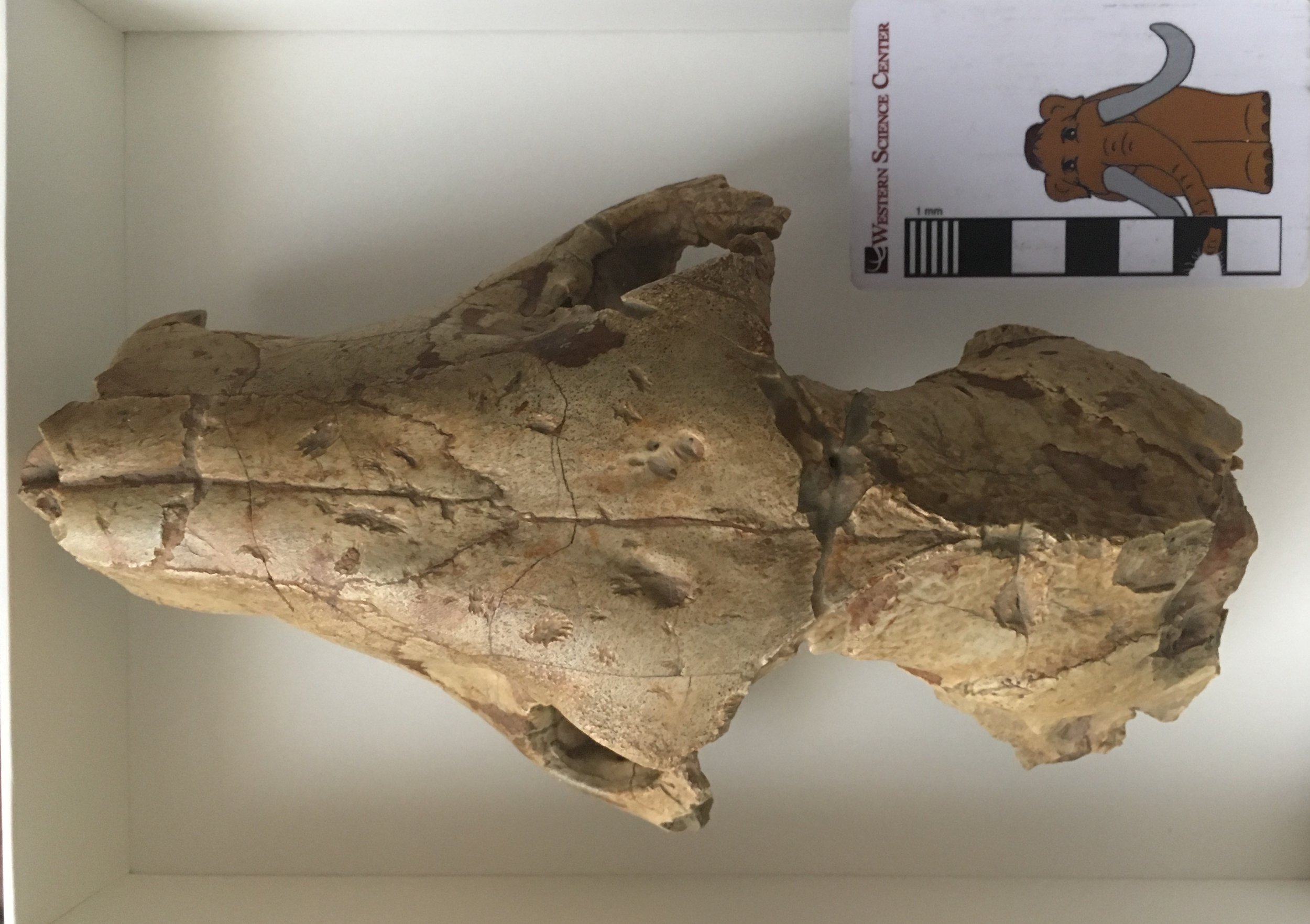 And ventral view:
And ventral view: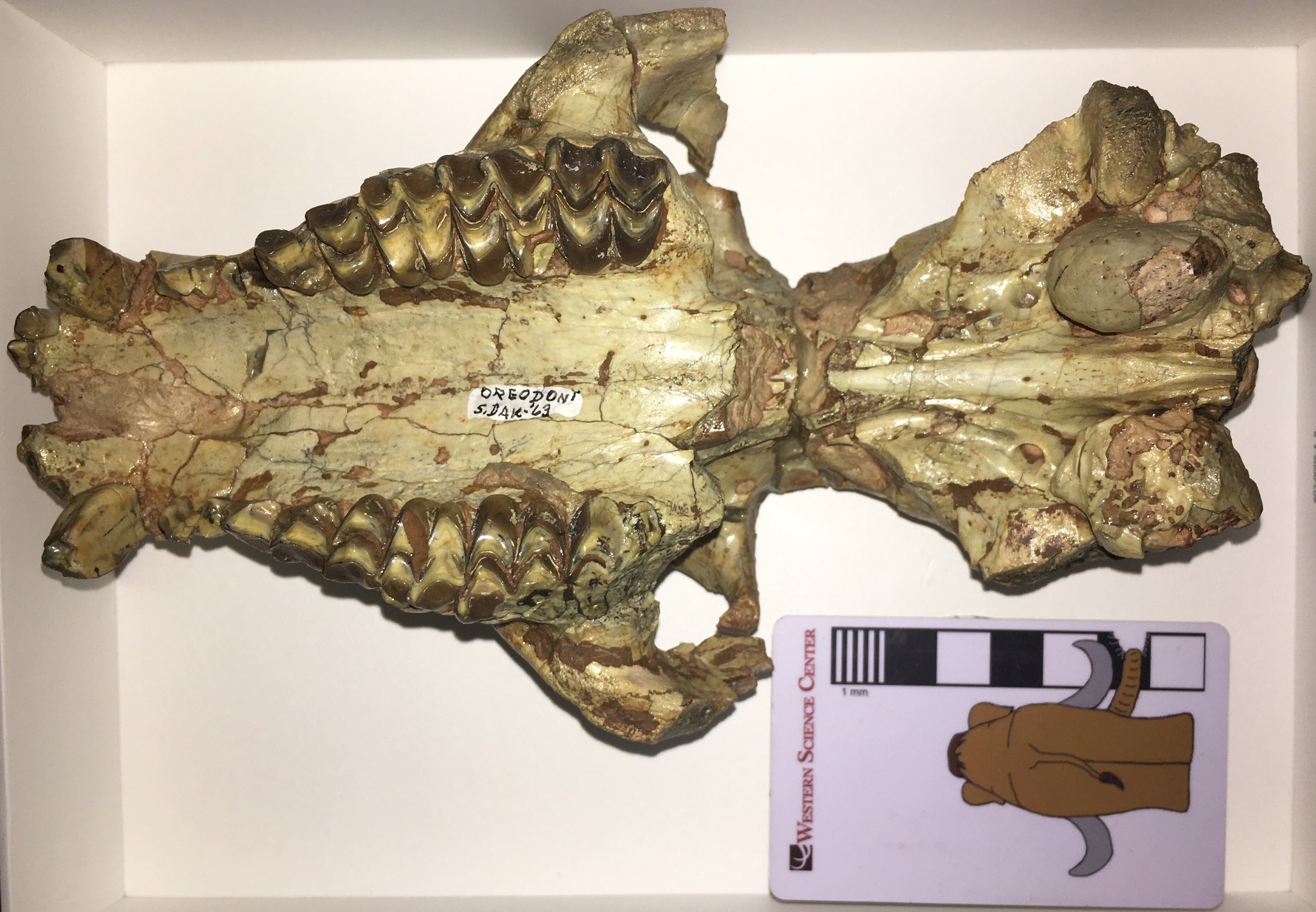 The front of the snout seems to end abruptly, as if part of it has been broken off, but the short, deep skull is actually normal in most oreodonts. If you look carefully at the teeth in ventral view, you can see that the incisors are preserved, confirming that the snout is complete. Based on the size and shape of the skull, I believe this specimen is from Merycoidodon culbertsoni, one of the most common oreodonts in the White River Group. Thousands of specimens have been collected, especially at Badlands National Park and the surrounding areas. The Museum of Geology at the South Dakota School of Mines has many beautiful examples of Merycoidodon on display, including this female that was pregnant with twin calves:
The front of the snout seems to end abruptly, as if part of it has been broken off, but the short, deep skull is actually normal in most oreodonts. If you look carefully at the teeth in ventral view, you can see that the incisors are preserved, confirming that the snout is complete. Based on the size and shape of the skull, I believe this specimen is from Merycoidodon culbertsoni, one of the most common oreodonts in the White River Group. Thousands of specimens have been collected, especially at Badlands National Park and the surrounding areas. The Museum of Geology at the South Dakota School of Mines has many beautiful examples of Merycoidodon on display, including this female that was pregnant with twin calves: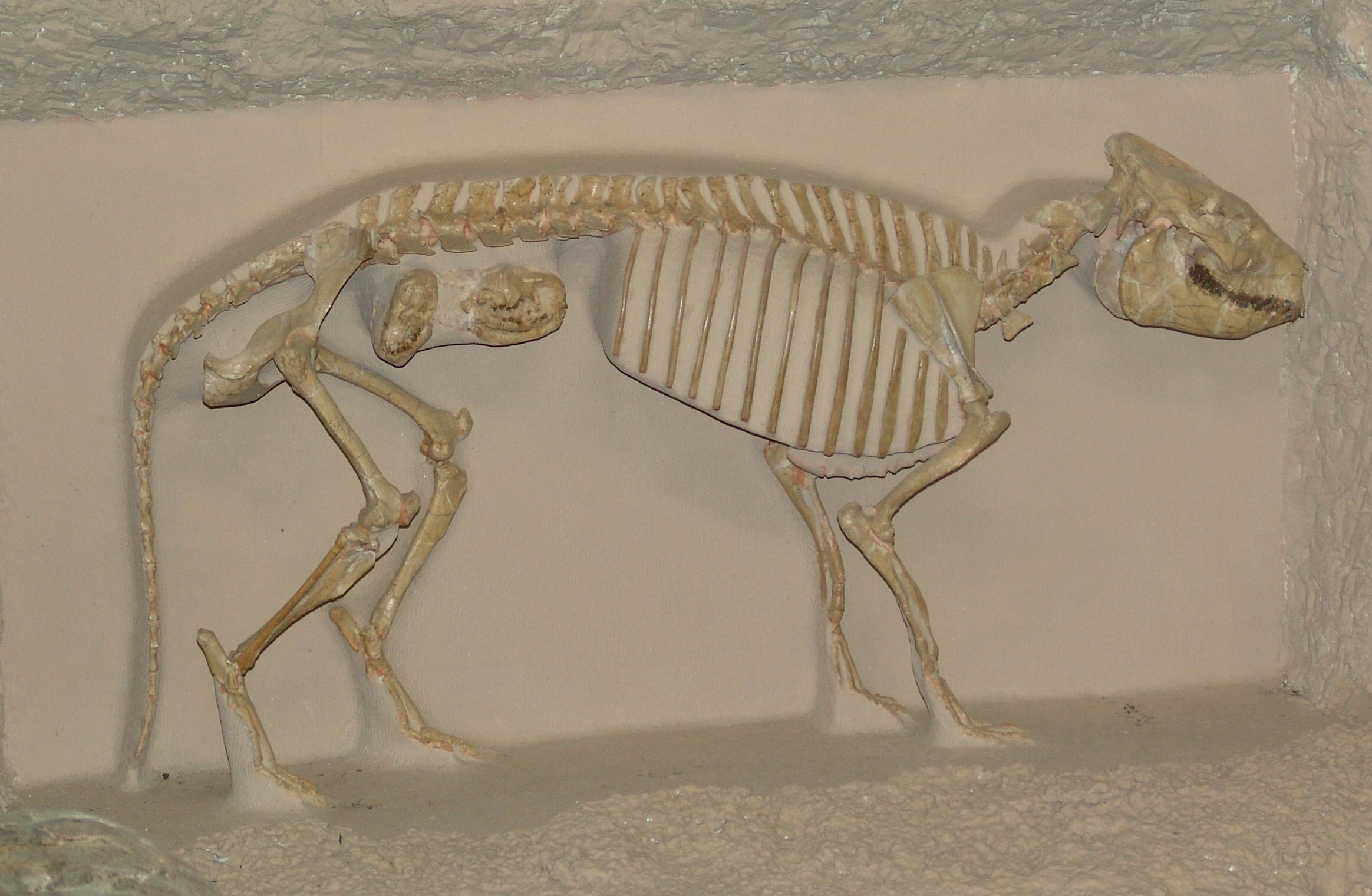 Oreodonts are often described as goat- or sheep-like, which is okay as far as it goes; Merycoidodon was about the side of a sheep. But oreodonts were most common before grasslands became widespread, so they were clearly not grazers in the same sense as sheep. This description also doesn't do justice to the diversity of oreodonts, which included forms that are nearly as large as a cow, as well as some that were probably more like tapirs and hippos in their habits.For more information on oreodonts and the environments they frequented, I encourage you to check out the virtual field trip on the Badlands National Park that Brett and I wrote a few years ago (link at the top right of the page; this requires iBooks on an iOS or MacOS device), or the Badlands National Park Twitter feed (@BadlandsNPS).
Oreodonts are often described as goat- or sheep-like, which is okay as far as it goes; Merycoidodon was about the side of a sheep. But oreodonts were most common before grasslands became widespread, so they were clearly not grazers in the same sense as sheep. This description also doesn't do justice to the diversity of oreodonts, which included forms that are nearly as large as a cow, as well as some that were probably more like tapirs and hippos in their habits.For more information on oreodonts and the environments they frequented, I encourage you to check out the virtual field trip on the Badlands National Park that Brett and I wrote a few years ago (link at the top right of the page; this requires iBooks on an iOS or MacOS device), or the Badlands National Park Twitter feed (@BadlandsNPS).

